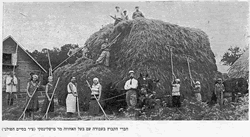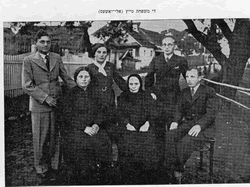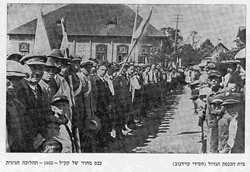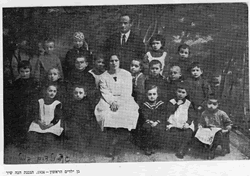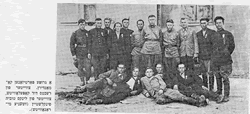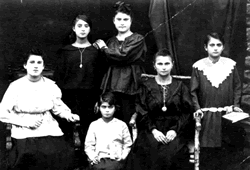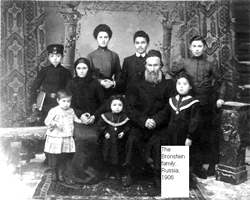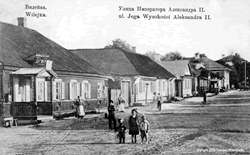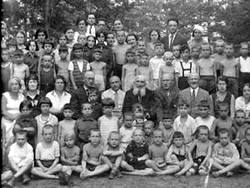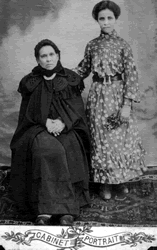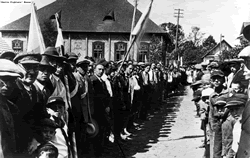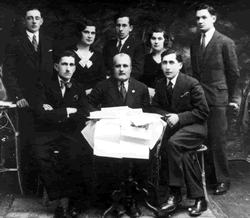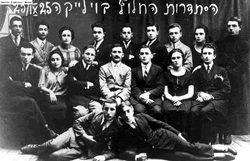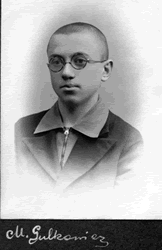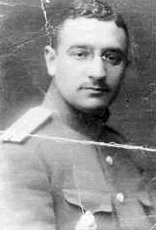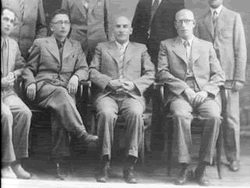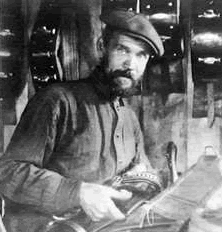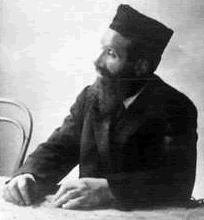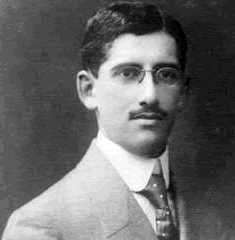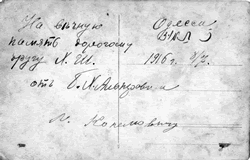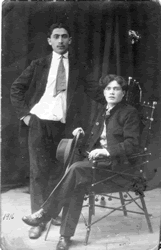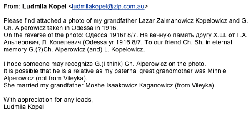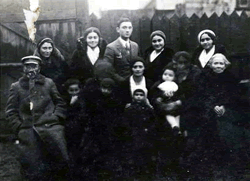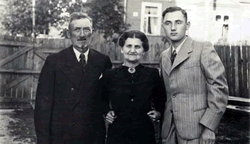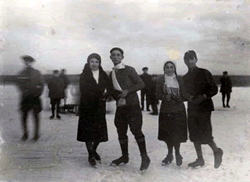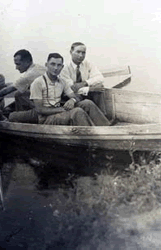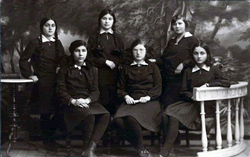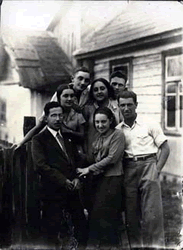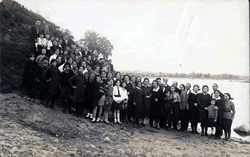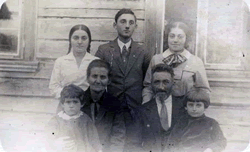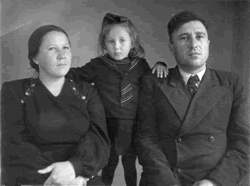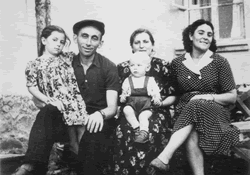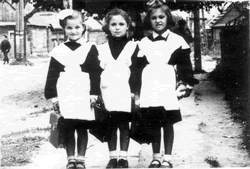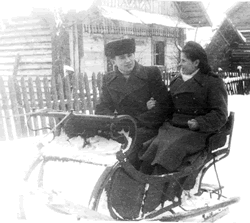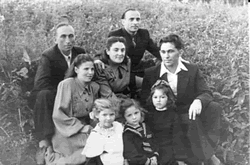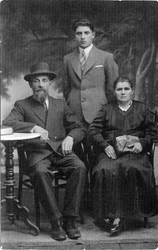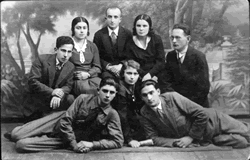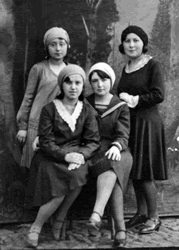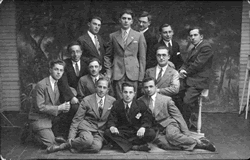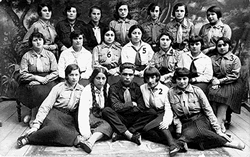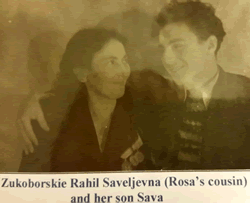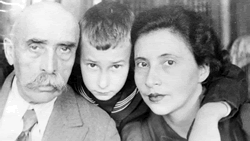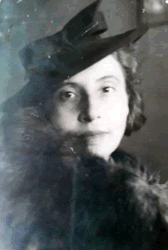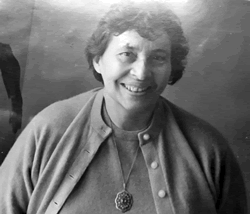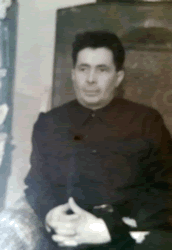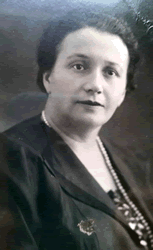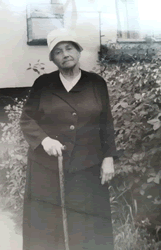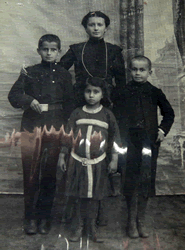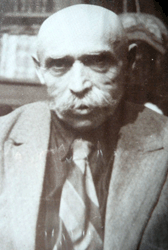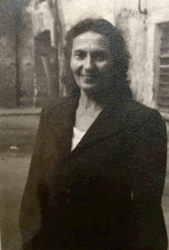Please share your comments or photos or links for posting on our Guestbook Page here: egl.comments@gmail.com
Editors: Kalman Farber and Joseph Se’evi, Tel Aviv, Isreal
1. Historical Review
2. General survey: Religious, social and Zionistic Institutions; Personalities
3. Culture and Education
4. The Holocaust
V. Yiddish and English
1. History of Vileika
2. Religious Cultural and Educational Institutions, and a short review of the work of the “Landsmenshaften” in Boston and New York.
3. The Holocaust
4. Memorial list of the people who perished.
5. A synopsis in EnglishForeword With a thrill of holiness, fear and dread, bent under the heavy burden of mourning, sorrow and bereavement we approach the task of raising a written monument to our holy community that was so ruthlessly uprooted and wiped out from the face of the earth.
The town was small and young, and yet it was a metropolis in Israel; it counted no more than eight generations of l and faithful Jews in the course of its short existence of two hundred years, but all of them, regardless of the type and group that they belonged to, were imbued with their love of fellow Jews and Zion. Ever since the community was doomed, we, a handful of survivors, saved from the awful conflagration that consumed the entire community, together with our old timers in Israel conceived the idea to perpetuate it and raise a monument in writing in its memory, for the coming generations, both in Israel and abroad.
It was a hard and difficult task, and we asked ourselves: Will we be able to accomplish it? Can we find within our ranks people who are gifted enough to put down in writing the feelings and emotions of the hearts, the material and spiritual life, the joys and sorrows of our town, from its beginnings to its bitter end- there are neither writers and poets among us. But, on an afterthought, we realized that the mission imposed on us by the very fate as it were, does not call for a literary masterpiece, and neither is it expected to be composed of superb poetry. All we want is to bequeath to the coming generations a memorial book written by joint effort and co-operation of our own townsmen: simple, honest stories of the lives of our predecessors, including descriptions of the benevolent and cultural institutions to which our dear ones generously contributed and for which they so eagerly worked, dreaming of a world to come that will be a world of good only. So also did we include in this book stories written in letters of blood and fire by people of our town who dared raise the banner of rebellion, fought to death, in the ranks of the partisans, against the accursed Nazis and their relatives, and avenged the blood of their relatives and dear ones, and thus set a halo of honor and glory to their people, the people of Israel.
We cannot, however, assure that this book fully reflects all forms and shades of life in Vileika before its destruction, as we are missing data on many sides of life of the community that was and is not any more. Due to the stress of the turbulent long time that passed since then some repetitions, too, may be found in the book, but we hope that the readers will understand and forgive us. Let this book be a “ner tamid” to the souls of our martyrs.
-The Editors
Preface With grief and sorrow and broken heart do we hereby approach to perpetuate, in this book, our hometown Vileika, a small community in the province of Vilna that was so ruthlessly annihilated and blotted out from the earth by the Nazi murderers and accomplices.
Ever since the destruction of the town the aching hearts of the few survivors of the holocaust have been calling to set up a monument to our near and dear ones who were so brutally cut off from the land of living, and even their graves were desecrated by the local murderers, the goyim of the town.
At the Jahrzeit-meeting in 1965 at which were present our townsmen who were lucky enough to reach the safe shore of Eretz-Israel before the war, as well as those who escaped the Nazi horrors, and arrived here after the Holocaust- it was decided to put up a symbolic tombstone in the form of a book that will perpetuate the memory of our community for generations to come.
Our townsmen, wherever they may be, who will read this memorial book will find it a true reflection of the active and seething religious, spiritual and cultural social life that was sparkling and bubbling in the town for eight generations. It also reflects everyday life from every corner and angle whether n writing or in photographic pictures. The greater part of the book is dedicated to the community life in the last sixty years, and those chapters were written by our people from their personal memories. The notes on the ghetto and the holocaust were written by people who themselves experienced all the horrors of the Nazi atrocities. In addition there are also personal stories of our people who joined the partisans and fought bravely in their ranks, some of who fell in battle and others who miraculously escaped death. Finally, at the end of the book, there is a list of names of all men, women and children who lost their lives in the Holocaust.
We were able to publish this book thanks to the aid extended to us by our townsmen in Israel and abroad. We express our gratitude to all those who answered our call and put in writing the life of the community from all aspects.
Our thanks and appreciation also to the editors of the book, Messrs. Kalman Farber and Joseph Se’evi. Mr. Farber, one of the few survivors, put in a great deal of work and effort in gathering the material, added to it much of its own and edited the book. Mr Se’evi helped editing the book.
We also thank members of the Publication committee, Mr. S.H. Dubin, President of our organization, and ex-President of the community of Vileika for twenty years, a devoted and active Zionist who contributed to this book some chapters on the community life, and had a large share of procuring the means for the printing of the book.
We express our gratitude to Mr. H.S. Kopelowith, of blessed memory, a veteran and active Zionist who took care to supply the paper we needed for the book and who laid out his nice form. Unfortunately this distinguished man died before the book was completed, and he did not live to see it in print.
Others who deserve thanks are Messrs. Benshem and Landau of the younger set who spared no effort and energy in printing this book.
It goes without saying that a great deal of thanks is due to all our townsmen in Israel and abroad who contributed generously and thus made publication of the book possible. Special thanks to our townsmen in America, Mr. YehudaTeitz, and Mr. Jacob Eisenstadt. May their help in perpetuating the memory of our slaughtered people be remembered for generations.
And last but not least: our many thanks to Mr. Jacob Erdman and the printing house “Shamgar” for their fine work on this book.
Outline of the History of Vileika
The district town of Vileika is a young town, and practically, has no history in the true sense of the word. According to Russo-Polish encyclopedias the area it is built on was nothing but a stretch of forest until the beginnings of the 18th century.
The beginnings of the town were sometime around the year 1766, when it became, officially, a village, the center of a rural district which formed part of the district of Ushimany.
In 1793 the town was annexed to Russia. At that time only 257 Jews were living there. After the third partition of Poland, when the province of Minsk came into being, Queen Catherine II of Russia promoted Vileika to the rank of a district town in the newly formed province of Minsk. The Inhabitants of the village were granted urban rights. The houses of the village, the estate of the local landlord and the inn formed the nucleus of the old town. In 1797 the first session of the first district of the old town took place in Kopelowitz’s inn, which proves that from its inception there was a Jew by the name of Kopelowitz living in the town. Tradition has it that it was David Kopelowitz, who used to visit Rabbi Mordechai of Lechewitch.
The first settlers in Vileika were mainly Jews who lived in nearby villages and farms. When the Russian government deported the Jews from the nearby rural villages they settled in the town, which thus grew slowly. At the same time more villages were added to the district of Vileika, which in 1842 was transferred to the province of Vilna. But simultaneously with the influx of Jews from rural villages, there began around 1885, when the population of the town reached a total of 1250, a counter movement: immigration of Jews to the United States of America and to inner Russia.
Another step in the advancement of Vileika was the establishment of a railway station in the town on the new Shedletz-Bologoe line built in 1904; this was a big stride towards further development. In 1860 there were three synagogues in Vileika: the great Beit Midrash of the Koidanow Hassidium, their “Shitbel” and the “Shitbel” of Lyubawitch Hassidium. At the time there was also a hospital in the town at the disposal of the sick of the town.
In 1908 a modern school was opened in town but it did not last long. In the first World War most houses of the town, including two synagogues were consumed by fire- the “Shitbel” of the Lyubawitcher escaped the conflagration. Most of the inhabitants left the town for fear of the Cossaks. Some of them went to inner Russian provinces, and others in the opposite direction: They crossed the frontline near Smorgon to the German side.
During the Great War, the revolution and the minor wars that ensured, the town changed hands several times between Russians, Germans, Soviets and Poles until it was finally occupied by the Poles. Most of the Jews who left the town during the fighting now returned home. They began to rebuild the demolished houses, build new homes, shops and business premises. They rebuilt the big central Beit Midrash, the synagogue of the “Misnagdim” on the plot where formally stood “Shitbel” of the Koidanover Hassidium. The last Presidents of the synagogue were Reb Moshe Shimon Norman, Reb Eli Leib Zagermister, Moshe Svirsky, Lippa Gutman and Berche Greenhouse. At about the same time the first Hebrew school “Tarbut” was founded. There were also “Heders” of the old type. The polish government established and elementary Polish school and a municipal secondary school. Many boys and girls, graduates of the “Tarbut” school, continued their studies in the sad secondary school while others went to Vilna to study in the Hebrew secondary school and Seminary there.
A bank, a Gemilat Hessed (and interest-free loan society) and other benevolent institutions were established in accordance with the age-old Jewish traditions. So also was established a library which contained Hebrew, Yiddish and Polish books.
Vileika was always a Zionist town and as soon as the fires of the war were extinguished in the beginning of the twenties the Jewish youth renewed the activities that were stopped during the years of the war. They flocked to the various Zionist organizations and groups, which were established in town by the efforts of prewar, veteran Zionists, such as Messrs. Jacob Levin, Benzion and Abraham Norman.
In addition many young people were trained and prepared for Aliya to Eretz Israel.
In 1921 the first Jewish community council was elected, with S.H. Dubin as it head. The council functioned and developed nicely during the twenty years of existence, until the annihilation of the entire community by the cruel Germans.
For a number of years after the First World War the economic situation in the town improved, although a considerable number of Jews were supported by relatives in the USA.
In the thirties, when the anti-Semitic movement in Poland became intense, the economic situation of the Jews in the town deteriorated. They were particularly hit by the acute anti-Semitic propaganda of an economic boycott on them.
A the outbreak of World War II more than 20 Jewish young men were drafted and sent to the front; most of them were taken prisoners by the Germans, and some never returned.
On Sep. 17, 1939, Vileika was occupied by Russian Soviet forces, and the economic situation in the town immediately changed for the worse. After a few days of Soviet rule one could not recognize the town. The sawmill of Yeshaya Edelman and the Ch. Dubin was nationalized. Edelman was the first Jew to be detained on a charge of being “an enemy of the new regime”; he was imprisoned in Minsk and was never heard of again. Later on Dov Berman, Berl Shulman, Nehemia Keller and his son-in-law, Gronem Koblenz and David Charna were detained.
At the end of the winter 1939-1940, when the people of the town were given Soviet identity cards, many of the Jews were given cards with the infamous paragraph “Forbidden to live in capital city of the province , being a dangerous person”, and were obliged to move to the villages. Their houses and chattels were confiscated, and their economic situation became unbearable. Whoever could not prove that he was a worker in the past , could not get any work now and was on the brink of starvation. All religious, welfare and charitable institutions, including the synagogues were closed down. All Jewish workers were required to sign a petition to government asking the synagogues to be closed down because they are not in need of them anymore. The great synagogue was turned into a hostel for gentile workers, and the others served as storehouses for grains. One small-side room only in the great synagogue building was allotted to old men who continued to pray there daily. The Zionist movement was completely forbidden and its activities were completely stopped. The Hebrew school “Tarbut” was closed down and its pupils were transferred to the general public school together with the children of the Goyim, The Hebrew language was forbidden and book sin that language were burned.
Jewish young men and women from the neighborhood villages flocked to Vileika to study and work there. In 1940 the population reached a high of 10,000 most of who came from Eastern Soviet Russia and the others from Vilna and the vicinity.
That winter four families from Vileika were deported to Siberia on the charge of being enemies of the Soviet regime. These were the families of S.H. Dubin, Nehama Edelman and her two sons, Dov Shulman, and the family of Jacob Charna.
At the outbreak of the Russo-German war on June 22, 1940, only fifty families managed to escape eastward, but most people of the town who knew only too well the Soviet Regime, and understood what it has in store for them preferred to stay home, and thus exposed themselves to the dangers of the Nazi atrocities and cruelties, and eventually lost their lives indeed. Those who did escape were deported to Siberia and 80% of them were saved, and the greater part of the finally arrived to a safe shore in Israel.
The Holocaust
The annihilation of the Jews of Vileika like all others in all Nazi occupied territories in World War II was planned carefully and meticulously up the last iota.
The first victims were Jews who were reported by neighbors that they collaborated with the Soviets. The very first one was the son of Meirem Levin who served in the militia organized by the Soviets. The Germans looked for him, but could not find him , so they killed his brother instead. The three German murderers planned three “actions”: the first of these took place in the wood of Malouny were 150 men were killed. In the second, “the two day action”, men, women and children were snatched carried off by force and slaughtered in the Mayak (near Krivaya Sloboda) into a common grave digged and prepared in advance by the Jews of the town.
The third, last action, was on Purim, when the remnant of the Jews of Vileika and the surrounding villages were slaughtered in the yard of the central prison of the town and the corpses were thrown into a deep pit there and burned. Later on single individuals and even groups of Jews were brought daily to the pit, killed and their corpses thrown into the fire of the pit. For many weeks afterwards the smoke rising from the pit hung like a cloud over the yard.
But the Jews of Vileika were to be found also in the woods, ghettos and partisan camps. Those who succeeded to escape from the ghetto and join the partisans covered the Jewish people with glory. Two of them, Noah Dinerstein and Itzhak Zihok from Retzke were decorated after their death with the highest medal of the Soviet Union “Hero of the Soviet Union” in recognition of their heroic feats in struggle against the Germans. Many of these sainted heroes were our townsmen who fought like lions and avenged blood of the Jewish victims murdered by the Nazis. In the Hebrew part of this book, in the chapter on the Holocaust as well as in the Yiddish part (page 231) the reader will find a full description of what happened to the Jews of Vileika from the day the Germans occupied the town till the final annihilation of the entire community in 1944, before they were treated.
At the end of the book a list of the names of the victims is given. Vileika was wiped out from the face of the earth, but its brave sons inscribed a glorious page in the history of the martyrdom of the Jewish people.
Iyar 55732
Kalman Farber
Yiskor Our sacred and unforgettable community is gone, and it left us three days of memorial and mourning as follows:
I. 17 of Tamuz (17.7.41) when more than 150 men were slaughtered in the wood of Malouni.
II. 5th and 6th of Menahem AV (29-30.8.41). In these two days more than 250 men., women and children were brutally killed near Mayak and buried their in common grave.
III. 14 of Adar (Purim) (3.3.42). The third, final slaughter was on Purim; men women, and children were bestially killed, and their bodies burnt in a pit in the prison yard in Vileika.
All the Vileika townsmen both in Israel and abroad fixed the Yahrzeit day in memory of our slaughtered townsmen on Shushan-Purim. On that day we gather together and meditate on the memory of our brutally killed brethren. If you are one of our townsmen, or a descendant of its people, please read this book it on each one of the three above dates and learn from it the last request of the sacred members of your family and relatives, who are crying from their graves and demand revenge.
Remember and do not forget!
Remember what Amalek did to us, this modern Amalek of our times.
Tell your children, and they, in turn, shall tell their children, until the end of days, what did Nazi Amalekim and their accomplices did our people. When you light a Yahrezit candle in memory of the souls of members of your family and relatives- you should think of them and know that your sorrow is not the sorrow of a single, individual person, as you are mourning for thousands and thousands of our people. Your tears are nothing but a drop in the sea of blood and tears, sorrow, bereavement and annihilation of our agonizing people.
Remember and do not forget!
Name Town District Region Country Birth Date Source
Sosenskaya Lelya daughter of Moshe SOSENKA WILEJKA WILNO POLAND
1918 Records of the Soviet Extraordinary Commission
Sosenski Mendal son of Yizhak SOSENKA WILEJKA WILNO POLAND 1937
Records of the Soviet Extraordinary Commission
Sosenskaya Khaya daughter od Yzhak SOSENKA WILEJKA WILNO POLAND
1941 Records of the Soviet Extraordinary Commission
Rabunskaya Maya daughter of Mendel SOSENKA WILEJKA WILNO POLAND
1905 Records of the Soviet Extraordinary Commission
Rabunski Leyzik son of Ytzhak SOSENKA WILEJKA WILNO POLAND 1928
Records of the Soviet Extraordinary Commission
Rabunskaya Khaya daughter of Yzhak SOSENKA WILEJKA WILNO POLAND
1930 Records of the Soviet Extraordinary Commission
Rabunski Sholom son of Ytzhak SOSENKA WILEJKA WILNO POLAND 1941
Records of the Soviet Extraordinary Commission
Rabunski Afroim son of Yankel SOSENKA WILEJKA WILNO POLAND 1889
Records of the Soviet Extraordinary Commission
Rabunski Khaim son of Afroim SOSENKA WILEJKA WILNO POLAND 1920
Records of the Soviet Extraordinary Commission
Paval Minka SOSENKA WILEJKA WILNO POLAND 1900 Records of the
Soviet Extraordinary Commission
Sosenskaya Susannya SOSENKA WILEJKA WILNO POLAND 1877 Records of
the Soviet Extraordinary Commission
Shulman Sara SOSENKA WILEJKA WILNO POLAND 1877 Records of the
Soviet Extraordinary Commission
Sosenskaya Leba daughter of Gendel SOSENKA WILEJKA WILNO POLAND
1937 Records of the Soviet Extraordinary Commission
Sosenskaya Khaya SOSENKA WILEJKA WILNO POLAND Records of the
Soviet Extraordinary Commission
Alkhimsnok Mikhail SOSENKA WILEJKA WILNO POLAND Records of the
Soviet Extraordinary Commission
Kacowicz Bluma born in Sosenka lived in MATIK WILEJKA WILNO POLAND
1887 Page of Testimony
Sosenski Leyba born in 1888 to Itzko SOSENKA WILEJKA WILNO POLAND
1888 Records of the Soviet Extraordinary Commission
Sosenskaya Yenta SOSENKA WILEJKA WILNO POLAND 1897 Records of
the Soviet Extraordinary Commission
Sosenskaya Khaya born in 1929 to Leyba SOSENKA WILEJKA WILNO
POLAND 1929 Records of the Soviet Extraordinary Commission
Sosenskaya Khana born in 1931 to Leyba SOSENKA WILEJKA WILNO POLAND
1931 Records of the Soviet Extraordinary Commission
Yesen Leya SOSENKA WILEJKA WILNO POLAND 1884 Records of the
Soviet Extraordinary Commission
Sosenski Movsha born in 1905 to Yankel SOSENKA WILEJKA WILNO POLAND
1905 Records of the Soviet Extraordinary Commission
Sosenskaya Sora SOSENKA WILEJKA WILNO POLAND 1905 Records of the
Soviet Extraordinary Commission
Sosenski Mendel born in 1931 to Movsha SOSENKA WILEJKA WILNO
POLAND 1931 Records of the Soviet Extraordinary Commission
Sosenski Zalman SOSENKA WILEJKA WILNO POLAND 1929 Records of the
Soviet Extraordinary Commission
Sosenskaya Gata SOSENKA WILEJKA WILNO POLAND 1935 Records of the
Soviet Extraordinary Commission
Sosenskaya Liba SOSENKA WILEJKA WILNO POLAND 1937 Records of the
Soviet Extraordinary Commission
Sosenski Yankel SOSENKA WILEJKA WILNO POLAND 1941 Records of the
Soviet Extraordinary Commission
Jesin Zalmen DOLHINOW WILEJKA WILNO POLAND 1923 Page of Testimony
Sosenski Moses SOSENKA WILEJKA WILNO POLAND 1904 Page of
Testimony
Suseski Chaja SOSENKA WILEJKA WILNO POLAND 1908 Page of Testimony
Cymerman Rebeka born in Sosenska lived in Kurenets WILEJKA WILNO
POLAND 1890 Page of Testimony
Sosenski Shmuel born in Sosenka lived in ILJA WILEJKA WILNO POLAND
1898 Page of Testimony
Sosiensky Itzhak born in Sosenka lived in KOWEL KOWEL WOLYN POLAND
1860 Page of Testimony
Sosenski SOSENKA WILEJKA WILNO POLAND 1905 Page of Testimony
Testimony
Kaganowicz Ester born in Sosenka WILEJKA WILEJKA WILNO POLAND
1908 Page of Testimony
Sosenski Leibe SOSENKA WILEJKA WILNO POLAND 1902 Page of
Testimony
Alperovicz Giesia born in Sosenka lived in DOLHINOW WILEJKA WILNO
POLAND 1913 Page of Testimony
Rachel Sosensky nee Jesin born in Sosenska and lived in DOLHINOW
WILEJKA WILNO POLAND 1914 Page of Testimony
Jenta Sosensky nee Taubes was born in Kuranec, Poland in 1904 to Zeev
and Khana. She was married. During the war was in Sosenka, Poland.
Jenta perished in 1943 in Sosenka. This information is based on a Page
of Testimony (displayed to the left) submitted on 21/10/1955 by her
sister.
Susenski Szaul born in Sosenka lived in ILJA WILEJKA WILNO POLAND
1906 Page of Testimony
Leib Sasenski was born in Sosenka, Poland in 1890 to Tzvi and Hinda.
He was a clerk and married to Yenta nee Taubes. During the war was in
Sosenki, Poland. He perished in 1943 in Sosenki, Poland. This
information is based on a Page of Testimony (displayed to the left)
submitted on 04/10/1955 by his sister in law
Sosenski Hendel SOSENKA WILEJKA WILNO POLAND 1904 Page of
Testimony
Rywa Cimerman was born in Sosenka, Poland to Yosef and Lea Pesia. She
was a housewife and married. Prior to WWII she lived in Kurzeniec,
Poland. During the war was in Kurzeniec, Poland. Rywa perished in
Kurzeniec, Poland at the age of 60. This information is based on a
Page of Testimony (displayed to the left) submitted on 01/06/1955 by
her niece
Bluma Kacowicz was born in Sosenka, Poland in 1887 to Yermiyahu. She
was a housewife and married to Berl. Prior to WWII she lived in Matik,
Poland. During the war was in Matik, Poland. Bluma perished in 1942 in
Krzewicza, Poland. This information is based on a Page of Testimony
(displayed to the left) submitted on 18/12/1956 by her relative
